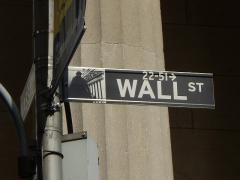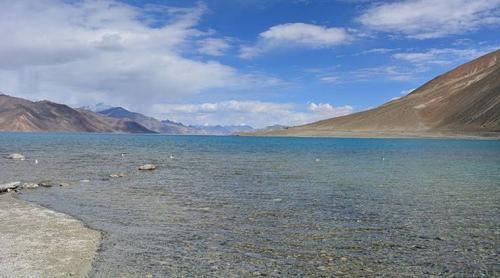Steve Bull's Blog, page 1338
August 16, 2017
Salt, Wampum, Benjamins – Is Bitcoin Next

Salt, Wampum, Benjamins – Is Bitcoin Next
Currency was first developed about 4000 years ago. Its genius was in the ability to supplant barter thus greatly improving trade and providing a better means for storing value. As illustrated in our title, currency has taken on many different physical forms through the years. Given the recent advances in technology, is it any surprise the latest form of currency resides in the ether-sphere? In this article we explore the basics of cryptocurrencies and the important innovation they support, blockchain. We also offer an idea about whether or not Bitcoin, or another cryptocurrency, can become a true currency worthy of investment.
A Primer on Cryptocurrency and Blockchain
Cryptocurrency is an independent, digital currency that uses cryptology to maintain privacy of transactions and control the creation of the respective currency. While not recognized as legal tender, cryptocurrencies are becoming more popular for legal and illegal transactions alike. Bitcoin (BTC), developed in 2009, is the most popular of the cryptocurrencies. It accounts for over half the value of the more than 750 cryptocurrencies outstanding. In this article we refer to cryptocurrencies generally as BTC, but keep in mind there are differences among the many offerings. Also consider that, while BTC may appear to be the currency of choice, Netscape and AOL shareholders can tell you that early market leadership does not always translate into future market dominance.
Before explaining how BTC is created, acquired, stored, used and valued, it is vital to understand blockchain technology, the innovation that spawned BTC. As we researched this topic, we read a lot of convoluted descriptions of what blockchain is and the puzzling algorithms that support it. In the following paragraphs, we provide a basic description of blockchain. If you are interested in learning more, we recommend the following two links as they are relatively easy to understand.
…click on the above link to read the rest of the article…
5 Charts that Prove this Market Bubble is Not Slowing Down
The stock market continues to show volatile signs of a market bubble. Here’s five charts that show that a very real bubble is on the horizon.
1. Economic Bubbles and The Breadwinner Economy
Former Congressman and Reagan’s budget director, David Stockmanhighlights that, “Another month has passed in which the number of Breadwinner jobs remain below where it was when Bill Clinton was in the White House. Since then two presidents have come and gone, and now possibly a third. Yet there are still 300,000 fewer jobs in the productive center of the U.S. economy than there were in early 2001.”

Stockman levels, “This suggests something isn’t right, and that point is further driven home by the pancaking of the industrial economy over the last decade. Specifically, industrial production in June was still lower than at the pre-crisis peak”
What all of this equates to is a crisis of economic stagnation. It bolsters national debt and puts forward a threat to fiscal governance. Stockman summarizes that, “You can’t justify a healthy economy purely on the claim that jobs grew by 209,000 in July or that GDP is up at a minimal 1.9% rate in the first half of the year.”
2. Of Market Bubbles and Bank Loans
Financial market analyst, Lee Adler highlighted in mid-June that we have entered a period of calm before the storm. He argues that the storm is due to begin when the Federal Reserve starts to shrink its massive balance sheet.

Adler writes, “Some of the increase in debt that had driven the economy and the asset bubbles has bled off. With the Fed announcing that it will reduce its balance sheet, that’s likely to deter speculative borrowing even more.”
…click on the above link to read the rest of the article…
How Central Banking Increased Inequality

Although today high levels of inequality in the United States remain a pressing concern for a large swath of the population, monetary policy and credit expansion are rarely mentioned as a likely source of rising wealth and income inequality. Focusing almost exclusively on consumer price inflation, many economists have overlooked the redistributive effects of money creation through other channels. One of these channels is asset price inflation and the growth of the financial sector.
The rise in income inequality over the past 30 years has to a significant extent been the product of monetary policies fueling a series of asset price bubbles. Whenever the market booms, the share of income going to those at the very top increases. When the boom goes bust, that share drops somewhat, but then it comes roaring back even higher with the next asset bubble.
The Cantillon Effect
The redistributive effects of money creation were called Cantillon effectsby Mark Blaug after the Franco-Irish economist Richard Cantillon who experienced the effect of inflation under the paper money system of John Law at the beginning of the 18th century.1 Cantillon explained that the first ones to receive the newly created money see their incomes rise whereas the last ones to receive the newly created money see their purchasing power decline as consumer price inflation comes about.
Following Cantillon and contrary to Fisher and other monetary theorists of his time, Ludwig von Mises was the first to emphasized these Cantillon effects in terms of marginal utility analysis. With an increase in the stock of money, the cash balances of the early receivers of the newly created money increase.
…click on the above link to read the rest of the article…
Which EROI do we need to collect berries?

My wife, Grazia, collecting berries in the woods of Tuscany in a hot day of August. Maybe her ancestors were doing exactly the same, more or less in the same place, hundreds or thousands of years ago. Here, I present some reflections and some calculations showing that the EROI of this simple way of collecting food may be over 100, better than almost anything we have nowadays. Of course, no empire in history was based on hunting and gathering, but was that a bad thing?
The question of EROI – the energy return on energy invested – is raging nowadays, with some people insisting that a civilization cannot exist without an EROI of at least variously estimated values, at least 10 and higher (image on the right by Charles Hall). And that is said to mean we absolutely need sophisticated technologies, such as nuclear, in order to survive.
Yet, this morning I had been collecting berries in the wood with my wife and wondering: ‘what is the EROI of what we are doing?’ A reasonably good EROI, I am sure, enough for what our ancestors needed when they survived on hunting and gathering. All you have to do is to walk in the woods, find the berries and pick them up (and watch your step, you don’t want to fall into a thorn bush). If our hunter-gatherer ancestors used this method, and if we are here today – their descendants – it means it was an effective strategy for survival. Collecting what you can find is an ancient and tested strategy that goes under the name of “gleaning” and it has accompanied humankind for millennia. It is a good strategy just because it is so simple: no tools, no laws, no hierarchy. And it works.
…click on the above link to read the rest of the article…
We’ll always have the Sun: solar energy and the future of humankind

Above, Rick (Humphrey Bogart) speaks to Ilsa (Ingrid Bergman) in the movie “Casablanca” (1942). Here, the sentence has been a little changed. In the film, the phrase refers to “Paris”, not “The Sun”. But in the debate on the future of civilization, there is only one certainty: we’ll always have the sun.
Published by INSURGE INTELLIGENCE , a crowdfunded investigative journalism project for people and planet. Support us to keep digging where others fear to tread.
In this eight contribution to the INSURGE symposium, ‘Pathways to the Post-Carbon Economy’, Ugo Bardi, Professor of Physical Chemistry at the University of Florence, Italy, reflects on the importance of transitioning away from fossil fuels and how it, inevitably, means we should engage with some form of renewable energy.
But, he points out, while such a transition requires us to recall the fundamental role of the Sun as the primary energy source for all our activities, it also means we will have to re-think and re-do civilization-as-we-know-it. Whatever happens, much of what we have taken for granted in our consumer-centric societies today will be increasingly meaningless in the post-carbon future.
What we do know, concludes Bardi, is that we will always have the Sun: the question remains — what will we, and can we, do with it?
As it becomes clear that we must get rid of fossil fuels before they get rid of us, a question is being asked over and over:
“Can renewables replace fossil fuels?”
Some people have been sufficiently impressed by the rapid decline of the price of renewable energy that their answer is not only, “yes,” but that switching to renewables will be fast and painless. It will come simply as the result of the free market mechanisms, at most aided by a little magic called “carbon tax”. Then, economic growth will continue unabashed in the best of worlds.
…click on the above link to read the rest of the article…
The Death of “Alternative Energy”


Fifteen years ago, when I joined the early ranks of clean energy entrepreneurs, we were nearly dead in the water on climate. Oil was $15 per barrel, Al Gore’s groundbreaking movie An Inconvenient Truth hadn’t come out, and a solar panel was something that powered a calculator.
In the year 2005, I went to my first “Alternative Energy Conference” in Aspen, Colorado. I was asked to speak at the event, and hadn’t paid much attention to the agenda. Upon arrival I found the audience consisted of coal, oil and gas executives.
It turns out that “alternatives” in the energy space in 2005 actually meant new methods for extracting old fossil fuels: tar sands, “clean coal,” and a new thing called fracking. This, according to all of the other speakers, was the future.
I didn’t walk away optimistic about our coming transition. Forecasters weren’t wearing their rose-colored glasses either.

What a Difference a Decade Makes
In the first quarter of 2017, renewable energy accounted for 20% of all U.S. electricity while fracking has gone mainstream. On the flip side, six publicly traded coal companies declared bankruptcy from April 2015–2016 while coal production had its steepest annual decline since 1958. And after much hype, the number of operational clean coal power plants in the U.S. remains firmly stuck at…zero.
A coal plant built today would not be competitive with a combination of wind and solar in virtually any location in the country. And nowhere would it be competitive with natural gas.
In the end, these fossil sources, particularly coal, look increasingly like the new “alternative energy sources,” since there’s simply no economic justification for them.
The speed of this transformation may surprise some readers. That’s understandable. For years, traditional energy analysts have completely misforecast the transformation.
Why were these analysts so wrong? What drove this profound shift with such speed? This did not happen because of Paris. This didn’t even happen because of Kyoto before it. It didn’t happen because of something Trump did or undid. It didn’t even happen because of President Obama’s Climate Action Plan.

The Real Change Agents of the Energy Transformation
Three drivers of change set us on this course. It started first with the growing chorus of concerned citizens, scientists, and activists coming together to seek out solutions — often at a local level. This was catalyzed by inflection points like An Inconvenient Truth, but the sources of inspiration were everywhere as the evidence of change mounted. Second, local and state leaders in the U.S. started to listen. Across party lines, real leadership showed up to pass Renewable Portfolio Standards, enhanced automotive standards, and air quality improvement plans. Third, in reaction to the first two, businesses started playing an increasingly important role.
Broadly speaking, businesses have played two key roles in cementing our direction on climate. First, large companies have finally started to internalize the will of their customers. Five out of the top six most valuable public companies in the world are U.S.-based technology companies: Google (Alphabet), Apple, Microsoft, Amazon, and Facebook. They are also the source of the greatest amount of electricity demand growth in world. All of them have now committed to 100% clean energy in the near future — Google is there today. The others behind them will follow suit.
Leading companies have committed to 100% clean energy to save money, show leadership, and meet the growing cries from their customers and employees to be part of the solution. The magnitude of this commitment cannot be overstated. These companies have a combined market capitalization of nearly $2.3 trillion — exceeding the size of nearly every economy that signed the Paris accord.
The second way business has played a key role is innovation and entrepreneurialism. The impact of buying power is the domain of the large multinationals. The impact of innovation is the domain of startups. From SunPower and First Solar to Tesla and Nest, we have continually seen the unbounded creativity of startups and founders prove the impossible. And we’re just getting warmed up. Electric buses, large-scale energy storage, autonomous cars, electric planes, and the myriad software solutions to help make our energy more efficient and effective are launching daily.
Indian, Chinese Soldiers Clash Following Alleged Chinese “Incursion”
In what may be the first documented clash between Chinese and Indian soldiers who have been piling up across the border between the two nations over the latest territorial dispute, Reuters reports that “Indian and Chinese soldiers were involved in an altercation” in the western Himalayas on Tuesday, “further raising tensions between the two countries which are already locked in a two-month standoff in another part of the disputed border.”
While there has been no official confirmation yet by either India or China, a Reuters source in New Delhi who was briefed on the military situation on the border, said Indian soldiers “foiled a bid by a group of Chinese troops to enter Indian territory in Ladakh, near the Pangong lake.” He added that some of the Chinese soldiers carried iron rods and stones, and in the melee there were minor injuries on both sides, the source said.
“There was an altercation near the Pangong lake,” said a police officer in Srinagar, the capital of India’s Jammu and Kashmir state, under which the area falls. An army source in Srinagar, quoted by Reuters, spoke of an altercation following what he called a Chinese army “incursion in Pangong lake area“. This fresh standoff at Pangong Tso lake in Ladakh comes in the backdrop of tensions between Indian and Chinese troops over Doklam plateau in Sikkim sector with the PLA skipping the ceremonial border meetings on Independence Day.

Pangong Tso Lake
Here are additional details from the Indian Express:
Amid strained ties over the Doklam standoff in the Sikkim sector, Indian and Chinese boat patrols clashed at the Pangong lake in Ladakh on Tuesday even as the People’s Liberation Army declined the Indian invitation to participate in ceremonial border meetings on the occasion of India’s Independence Day.
…click on the above link to read the rest of the article…
Can economic growth continue without fossil fuels? The IPCC thinks so — here’s why its decarbonisation models are broken

(Source: VICE)
Published by INSURGE INTELLIGENCE , a crowdfunded investigative journalism project for people and planet. Support us to keep digging where others fear to tread.
In this third contribution to our symposium, ‘Pathways to the Post-Carbon Economy’, biophysical economist Graham Palmer assesses the plausibility of conventional economic forecasts of a global energy transition away from fossil fuels.
Most forecasts paint a rosy picture of continued, unimpeded economic growth, even as the world weans itself entirely off carbon-intensive energy sources. But are such scenarios really possible?
Palmer argues that they aren’t — not when we consider how the economy is fundamentally embedded in its biophysical environment. And if it isn’t, then we need a new approach to modelling, which pays greater attention the intimate relationship between energy, our societies, and their economies.
Climate change discourse is structured around competing narratives — degrowth, pro-renewables, pro-nuclear, localism, green business, techno-optimism, and so on. The energy scenario modelling by the UN’s Intergovernmental Panel on Climate Change (IPCC) provides a foundation for much of the discourse.
Integrated models are connected with socioeconomic and technological storylines to forecast a picture of key characteristics of future transformation pathways.
When we look at models from the most recent IPCC report (AR5), we see that that baseline scenarios project a 300% to 800% increase in GDP-per-capita by 2100. In these scenarios, strong mitigation is achieved with global consumption losses of only between 3 to 11% relative to baseline. Hence, the net-cost of decarbonising seems trivial over the long run.
From this perspective, the solution that follows is to put in place appropriate policies, support technology, remove fossil fuel subsidies and apply a modest but comprehensive carbon price.
…click on the above link to read the rest of the article…
Why We’re Doomed: Our Economy’s Toxic Inequality
Anyone who thinks our toxic financial system is stable is delusional.
Why are we doomed? Those consuming over-amped “news” feeds may be tempted to answer the culture wars, nuclear war with North Korea or the Trump Presidency.
The one guaranteed source of doom is our broken financial system, which is visible in this chart of income inequality from the New York Times: Our Broken Economy, in One Simple Chart.
While the essay’s title is our broken economy, the source of this toxic concentration of income, wealth and power in the top 1/10th of 1% is more specifically our broken financial system.
What few observers understand is rapidly accelerating inequality is the only possible output of a fully financialized economy. Various do-gooders on the left and right propose schemes to cap this extraordinary rise in the concentration of income, wealth and power, for example, increasing taxes on the super-rich and lowering taxes on the working poor and middle class, but these are band-aids applied to a metastasizing tumor: financialization, which commoditizes labor, goods, services and financial instruments and funnels the income and wealth to the very apex of the wealth-power pyramid.
Take a moment to ponder what this chart is telling us about our financial system and economy. 35+ years ago, lower income households enjoyed the highest rates of income growth; the higher the income, the lower the rate of income growth.
This trend hasn’t just reversed; virtually all the income gains are now concentrated in the top 1/100th of 1%, which has pulled away from the top 1%, the top 5% and the top 10%, as well as from the bottom 90%.
The fundamental driver of this profoundly destabilizing dynamic is the disconnect of finance from the real-world economy.
The roots of this disconnect are debt: when we borrow from future earnings and energy production to fund consumption today, we are using finance to ramp up our consumption of real-world goods and services.
…click on the above link to read the rest of the article…
Before “Fake News,” America Invented “Pseudo Events”

In the wake of the Chalottesville riot, it’s been interesting how quickly the focus has shifted away from the actual events in Charlottesville and toward the public pundits and intellectuals are expressing opinions about the events.
Already, the media has lost interest in analyzing the details of the event itself, and are instead primarily reporting on what Donald Trump, his allies, and his enemies have to say about it.
This is an important distinction in coverage. Rather than attempt to supply a detailed look at who was at the event, what was done, and what the participants — from both sides — have to say about it, we are instead exposed primarily to what people in Washington, DC, and the political class in general, think about the events in which they were not directly involved.
This focus illustrates what has long been a bias among the reporters and pundits in the national media: a bias toward focus on the national intellectual class rather than on events that take place outside the halls of official power.
Note, however, that those quoted rarely have any special knowledge about the events themselves. Their opinions are covered not because they are knowledgeable, but because their quotations fit easily into a narrative that the media wishes to perpetuate.
In a March 2017 column, Peter Klein noted this bias and what economist F.A. Hayek had to say about it:
The intellectual, according to Hayek, is not an expert or deep thinker; “he need not possess special knowledge of anything in particular, nor need he even be particularly intelligent, to perform his role as intermediary in the spreading of ideas. What qualifies him for his job is the wide range of subjects on which he can readily talk and write
…click on the above link to read the rest of the article…



